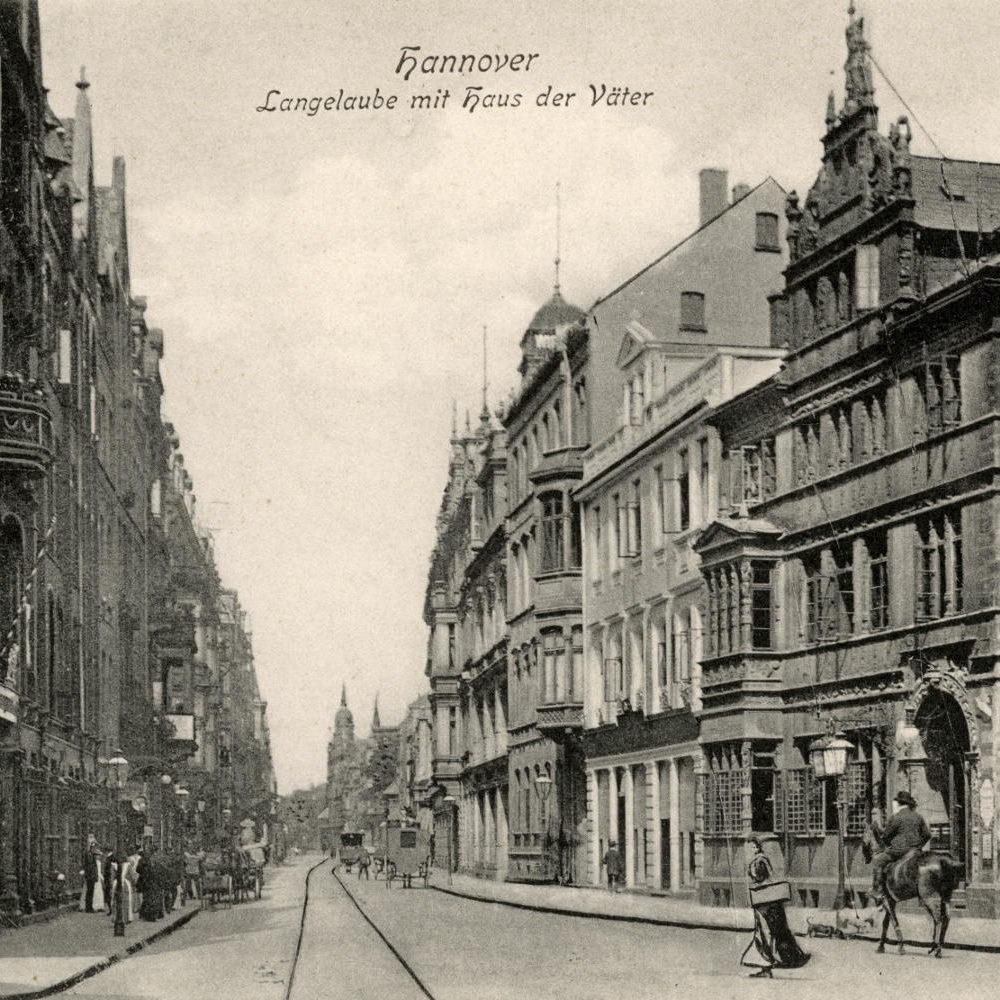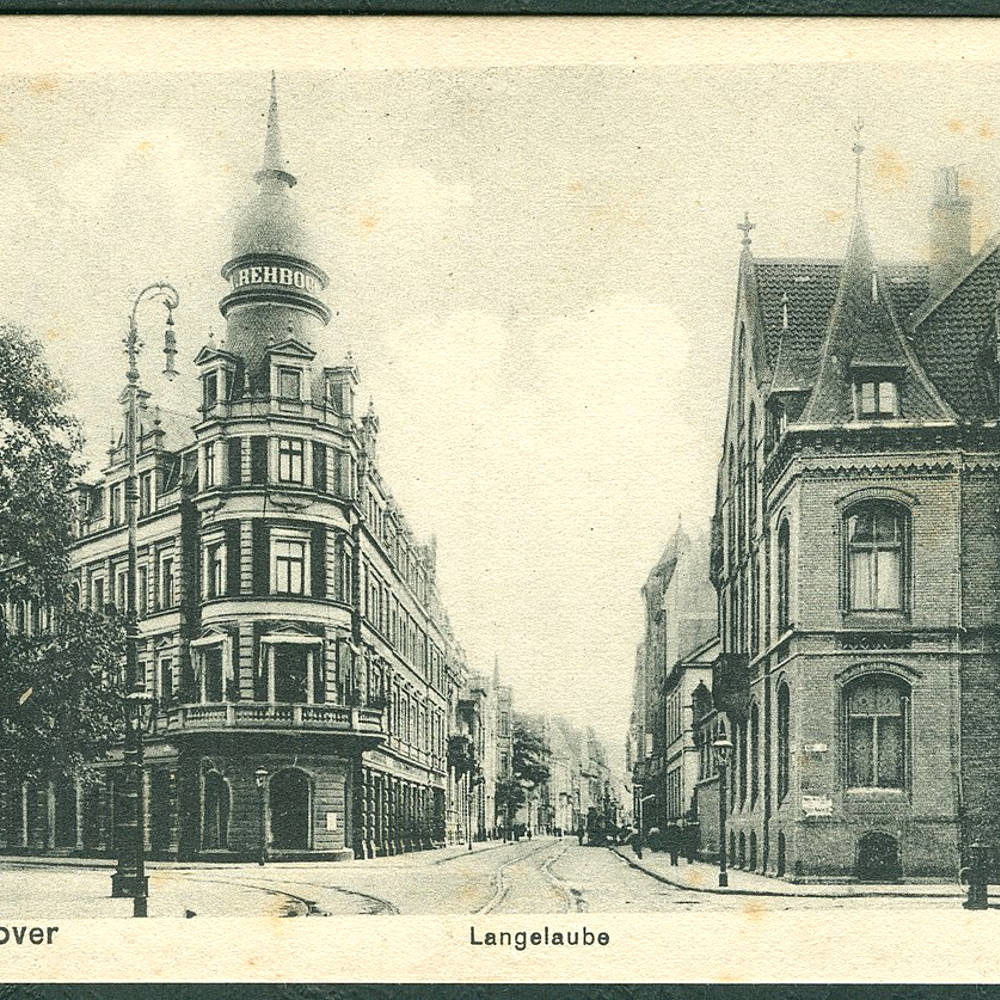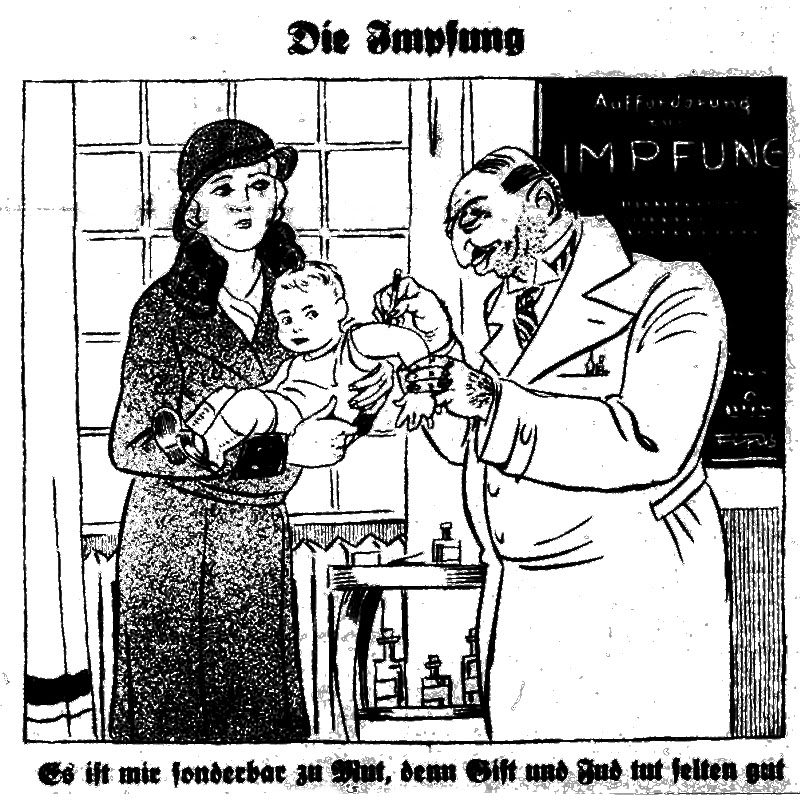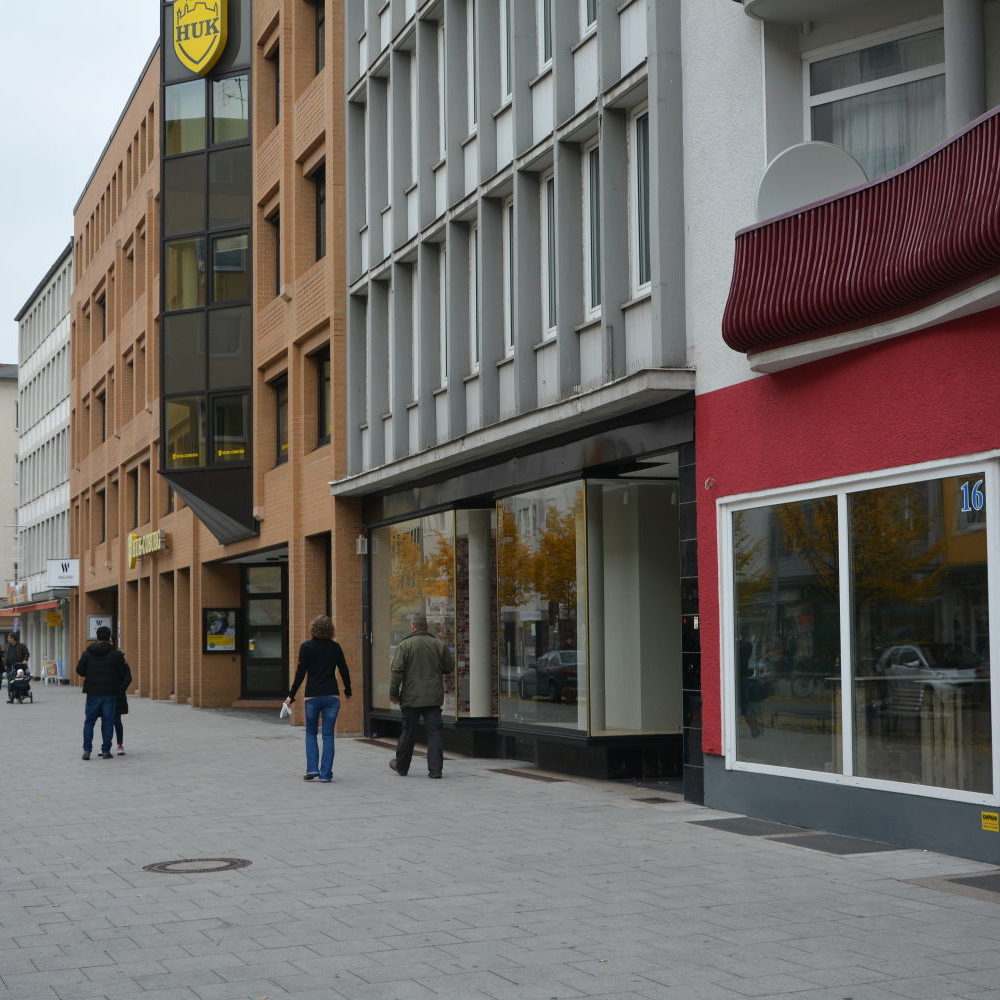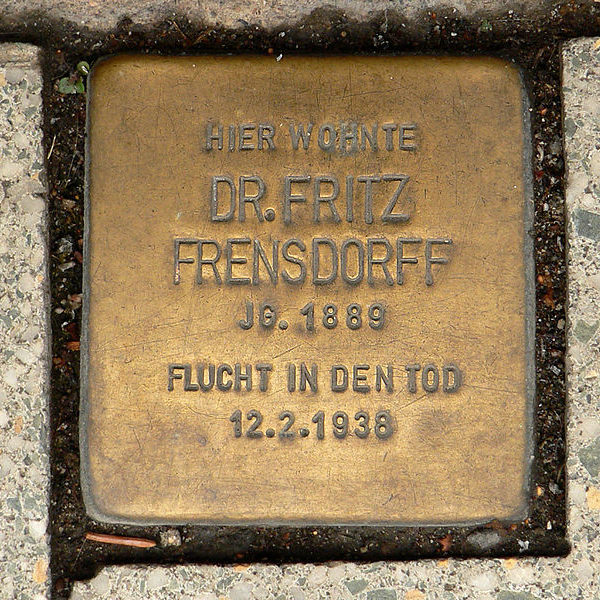The Stolperstein in front of the house at Lange Laube 18 commemorates the medical doctor Dr. Fritz Frensdorff. He was one of the many elderly Jews, both women and men, who were driven to suicide due to harassment of them by the Nazi regime. This wave of suicides reached its peak before the deportations from Germany.
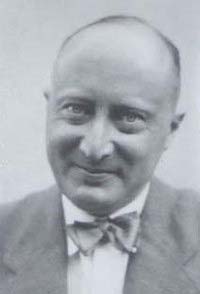
Abitur at the Goethe-Gymnasium
Fritz Frensdorff is born in Hanover in 1889, and the family lives at Kurze Strasse 4. His father, who died young, is a businessman. Address books from Hanover describe Kurze Strasse as an affluent residential neighbourhood: it’s the location for company headquarters and where high school teachers and mining company directors reside. In 1907, Fritz Frensdorff passes his Abitur [school-leaving certificate for university entrance] at the nearby Goethe-Gymnasium [secondary school] and goes on to study medicine in Freiburg and Munich. In 1913, he is granted his licence to practise as a doctor in Berlin where he works at the Jewish hospital.
Soldier in the First World War
In the First World War, while serving as a regimental doctor he is decorated with the Iron Cross 1st Class and 2nd Class. (Many German Jews respond enthusiastically to the call to arms. By contrast, an anti-Semitically motivated “Jewish census” in 1916, in the midst of the war, is supposed to prove that Jews are shirking military service en masse. The lack of a quick victory fuels anti-Jewish resentment: “Everywhere their faces grin, except in the trenches!” The result of the census is not made public before the end of the war because the truth was it disproved the accusations of those who instituted it.)
When the war ends, Fritz Frensdorff works in Göttingen, then in Berlin again, returning to Hanover in 1923, newly married and having completed his doctorate. In his parents’ house at Kurze Strasse 4, he establishes a practice as a “specialist for childhood illnesses and mental disorders”, interspersed with work at the clinic of the renowned child psychiatrist Professor Eugen Bleuler in Zurich. Two sons are born to the young family in 1928 and 1931.
The practice next to the Gauleitung
Following the transfer of power to the National Socialists, they expand the organisation of the party. The NSDAP Gauleitung [regional party leaders] moves into Kurze Strasse 3 – the house directly next to the house and practice of the Jewish doctor Dr. med. Frensdorff. Hannover’s address book for the year 1934 lists two changes: firstly, the renaming of the street Kurze Strasse to “Dincklagestrasse” after the former deputy Gauführer and “old warrior” Karl Dincklage and, secondly, the transfer of ownership of the house to the party. And this pattern continues to spread like cancer: in the following year, the party also owns the residential house, which has been home to the Frensdorff family for decades. In the meantime, Fritz Frensdorff lives and practices a few hundred metres away at Lange Laube 10 (nowadays number 18), which in 1937 is renamed “Strasse der SA”, “SA Street” [SA was the abbreviation of ‘Sturmabteilung’, literally ‘Storm Detachment’, the Nazis’ paramilitary wing, known as ‘Brownshirts’].
Suicide and flight
With the introduction of the “Law for the Restoration of the Professional Civil Service” passed on 7 April 1933, “non-Aryan” doctors are stripped of their positions in the public health system, such as universities, hospitals or administration. In the same month, their licence as statutory health insurance doctors is withdrawn, meaning that they can only treat private patients – at the same time, private health insurance companies only recognise the receipts submitted by Jewish doctors for medical treatment rendered if the patient is also Jewish. It has not been documented whether Dr Fritz Frensdorff’s practice was affected by the initial boycott of Jewish shops, lawyers, doctors and other businesses on 1 April 1933, but it can be assumed. His name is listed among the Jewish doctors on the “List of Jews in Hanover” from 1935 compiled by the anti-Semite Heinz Siegmann.
In February 1938, the Frensdorff couple travels to Berlin to discuss with friends the possibility of emigrating. But the doctor can see no future for himself, neither in Germany nor abroad. In 1938, before Jewish doctors are downgraded to “Krankenbehandler”, “treaters of the sick”, and effectively banned from practising, Fritz Frensdorff, MD, kills himself on 12 February 1938 at the age of 48. His grave can be found in the Jewish cemetery at An der Strangriede. In February 1939, his widow Anna Frensdorff, maiden name Eichelbaum, manages to leave Germany and escape to Palestine with their two sons.
Additional online information
Working Group on the Fates of Jewish doctors in Hanover Remembrance and commemoration. Jewish doctors in Hanover. [in German]
Culture of Remembrance Verlegte Stolpersteine in Hanover [in German]
The Stolperstein Art Project Website
Further reading: Click here
Texts and images: Michael Pechel

